Zack, 30, back after a long time away, Zionist, i follow back from @assigned-frog-at-birth
Don't wanna be here? Send us removal request.
Text
Why are you lgbtq+? wrong answers only GO
110K notes
·
View notes
Photo
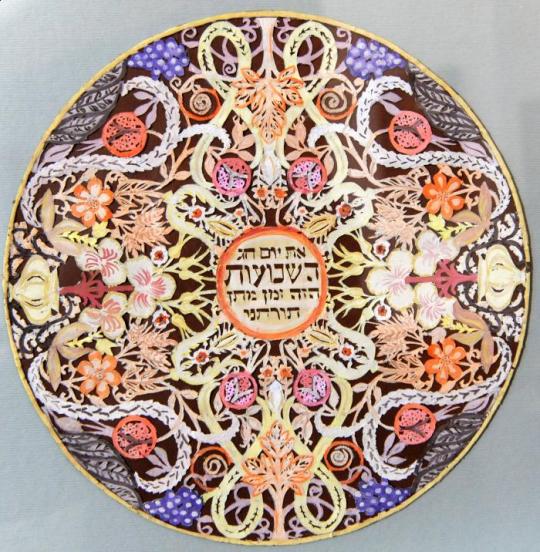

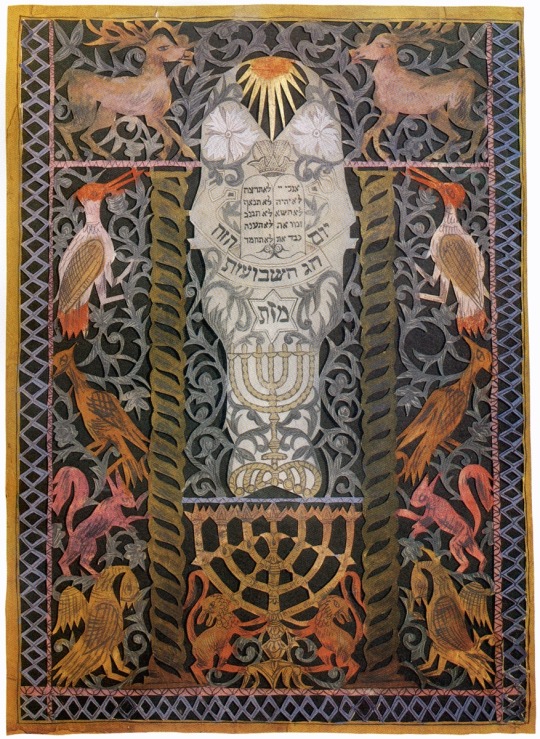
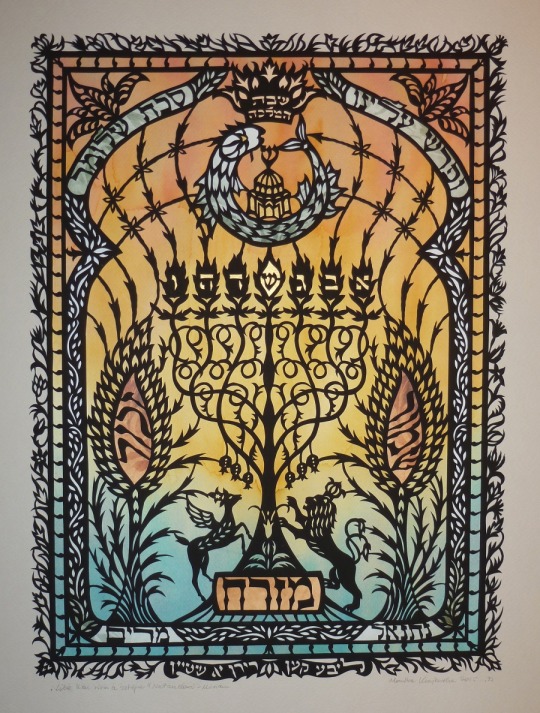

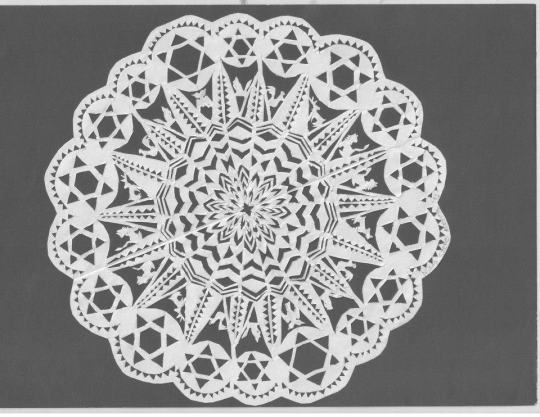
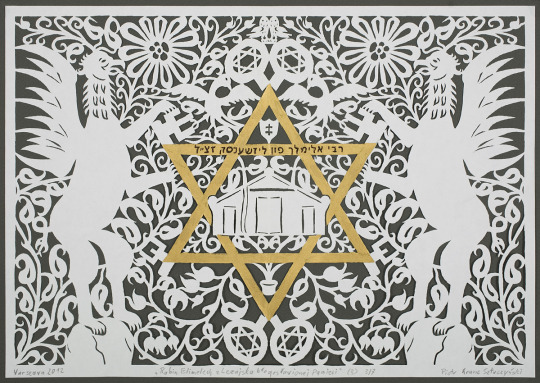
History and modern revival of Jewish papercuts in Poland
Art of papercutting is an important branch of Polish folk culture and crafts. The artworks called in Polish wycinanki were decorating houses of Polish peasants in the past, and many regional styles developed over the centuries up until the interwar period. The art became extremely popular in 19th century when manufactured paper was easy to obtain in the villages, and is a follow-up of older traditions of preparing Slavic protective plaques and symbols out of other available materials. It is also partly influenced by Jewish traditions of complex paper art.
Alongside the development of Polish wycinanki, the Jewish population of old Poland (and also of other countries) was creating their own characteristic style of papercuts. Just like in the case of wycinanki made by the Polish countrypeople, the Jewish papercuts were created mainly by the poorest members of Jewish communities who couldn’t afford expensive religious plaques (like painted or embroidered). Jewish papercuts had strictly a religious character, therefore their main types designated not regions like in the case of Polish wycinanki, but mainly their symbolic function, such as:
Mizrach (Mizrah) papercuts - hung on eastern wall and designated the direction to face during prayers (Mizrah is a general Jewish term meaning East, describing also the Eastern ‘Prayer Wall’ in synagogues)
Sziwiti (Shiviti) papercuts - including the meditative representation of Menorah or single candlestick
Szewnosłach (Shavouslakh) and Rojzelach (Roizalakh) papercuts - pasted to windows on the occasion of the Sukkot feast
Hamsa papercuts - pasted to walls in rooms where a newborn was sleeping (Hamsa is a protective amulet)
Ketuba papercuts - prepared for marriage documents (Ketubah is Jewish prenuptial agreement)
family albums’ papercuts - pasted next to a date of death to remind the readers to pray for the deceased
banner papercuts - the only papercuts of secular character among the Jewish population in the past, these were for example shapes of riders or soldiers that were included on banners carried by young boys during feasts of Shavuot when Torah was taken out of synagogues for processions
(I included Polish-Jewish and English spelling of the types)
Jewish tales and legends trace the custom of creating the papercuts to 13th century. According to these legends, there was once a rabbi who wanted to rewrite the Torah but had problems with cold weather - even the ink froze and he couldn’t continue his work. He came up with a better idea and started cutting out letters for the Torah, and so the first Jewish papercut was created.
Among most of Jewish communities only the males were allowed to create the papercuts. The paper was cut with the use of very sharp shears or a shoemaker’s knife, and was often painted with watercolours or pencils afterwards.
This tradition started fading out at the beginning of 20th century, but was still noticed among some Jewish communities during the interwar period (between 1st and 2nd World Wars). After the tragic invasion of Poland by the Nazi Germany, the tradition disappeared completely, and almost all of surviving papercuts were destroyed by the Nazis along with other Jewish property.
Jewish papercuts were revived after the war in USA and Israel. Most notable were analysis performed by ethnologist Dr. Giza Frankel who released a book dedicated to art of the Jewish papercuts in 1980s.
After the fall of the Soviet Block, another important centre of the Jewish papercuts’ revival became Kraków in Poland, where an annual Jewish Culture Festival is organized since 1988. Most notable artists creating the Jewish papercuts nowadays in Poland are for example Anna Małecka-Beiersdorf, Marta Gołąb, Monika Krajewska, Agata Szepe, Anna Ćwiklińska or Piotr ‘Kranc’ Stuczyński. Artworks of these artists are included in the photoset above.
Sources of pictures:
http://www.zygmuntfrankel.com/jewishpapercut1.html
http://www.muzeum.wloclawek.pl/pl/news.php?id=628
http://chidusz.com/szukam-raju-wycinanki-moniki-krajewskiej-w-panstwowym-muzeum-etnograficznym-w-warszawie
http://www.en.galiciajewishmuseum.org/jewish-papercuts.html
http://www.agraart.pl/nowe/artists/sztuczynski-piotr-(pseudonim-kranc)-polska-agra-art-aukcje-obrazy-antyki.html
https://www.facebook.com/jewishpapercut/
For more images, you can google ‘Jewish papercuts’ or the Polish term ‘wycinanka żydowska’.
4K notes
·
View notes
Text
Whenever people ask me what do Jews believe about X I always start with how much time do you have? How many answers do you want? Would you like the four most common interpretations?
And then I get to watch their face as they try to wrap their head around the idea that a religion based on debate and questioning might have multiple disparate opinions on scripture.
1K notes
·
View notes
Text



Mollayaghoub Synagogue/ Isfahan/ Iran
Photography: Saeed amini
2K notes
·
View notes
Photo

Mother Lighting Candles, Judith Yellin (1923–2005)
2K notes
·
View notes
Text

A Sephardic Torah manuscript with golden Stars of David, Soria/Tudela 1300–1312. ✡
Paris, Bibliothèque nationale de France, MS Hébreu 21, fol. 98v, Soria/Tudela 1300–1312.
From: Clockwise–Counterclockwise: Calligraphic Frames in Sephardic Hebrew Bibles and Their Roots in Mediterranean Culture by Dalia-Ruth Halperin. x
177 notes
·
View notes
Text


The Sarajevo Haggadah manuscript.
The Creation Cycle
Two pages containing eight framed miniatures, each one with scene, are dedicated to the seven days of creation (Genesis Chapter 1 and 2: 1-3). The pages face each other so that the entire cycle can be viewed continously from right to left, with no need to turn the pages. The pages are divided horizontally into two sections, each containing a pair of rectangles of unequal size. The first and last rectangles (upper right on fol. 1v, and lower left on fol. 2r) are long and narrow, while the one next to each of these is correspondingly wider.
Fol. 1v, A (Scene 1) - Pre-Creation: Formless Earth
"Now the earth was formless" (Gen. 1:2a).
The opening rectangle is dedicated to the shape of the universe before Creation, as described in verse 2 of Genesis 1, the first three words of which are cited in the inscription above the miniature. The artist however depicted the second section of the verse: "and the spirit of God was hovering over the waters." "The spirit of God" is seen as wavy rays of gold against the black darkness, rising vertically above the horizontal blue waves of water set against a white background.
Fol. 1v, B (Scene 2) - The First Day: Division of Light from Darkness
"First Day / Let there be light [...] / and [God] separated the light from the darkness" (fragments from Gen 1:5; 1:3-4)
The symbolic shape of the universe is shown as an arched rectangle - a design which is repeated in the next five rectangles (Scenes 2 through 7). In this scene it is divided vertically into two distinct sections - on the right , the bright and shiny white surface represents light, while the black surface, left, signifies darkness. And though the firmament is mentioned in the biblical text only in reference to the second day, the miniature depicts a series of narrow arched bands, alternately blue and white.
Fol. 1v, C (Scene 3) – The Second Day: Separation of Sky from Water
"Second Day / Let there be a dome in the middle of the waters" (Gen. 1:8; 1:6).
As narrated in the verse, the scene depicts the division of "the waters [under the sky] from the waters [above the sky]." (The Bible says that this "separated the water under the expanse from the water above it." God called the expanse "heaven", which we night call "sky"). It is set in the basic framing format of the arch with the firmament in altering colors, here painted in blue, highlighted by whitedots along the inner side of the arch – a feature repeated in the following days (Scenes 3 through 7). From a central point in the firmament emanate golden rays, reperesenting the deity and its command, as narrated in the text. These radiate out as they reach a white circle below, representing earth, in which the waters are divided: the upper section is void (air), while the lower is illustrated with waves of water, in a similar manner to the episodeof the formless world just above.
Fol. 1v, D (Scene 4) – The Third Day: Creation of Dry Land and Vegetation
"Third Day / Let the water [...] be gathered [...] / [A]nd let dry land appear [...] / Let the earth put forth grass" (fragments from Gen. 1:13; 1:9; 1:11).
The familiar firmament design with rays of gold radioating over the circle of earth reappears here. The arched framing device is set against the alternating color – dark cinnamon. Earth is shown with the waters of the sea, above which is a stretch of land on which tall green grass and three trees are growing.
Fol. 2r, A (Scene 5) – The Fourth Day: Creation of the Sun, Moon and Stars
"Fourth Day / Let there be lights (Gen. 1:19; 1:14) / Sun, Moon and Stars."
The first scene on the facing page repeats the previous composition, with most of its details and even the cinnamon color of the background field the same. To these are added new iconographic features and notable changes. Firstly, the white and blue firmament now bears four gold stars and two circles – the sun on the right, painted in gold, while to the left, a smaller dark circle stands for the moon. While the circle of earth with the grass and trees is similar if not identical, it is the only one in the cycle that depicts the rays of light radiating from earth towards heaven and not vice versa.
Fol. 2r, B (Scene 6) – The Fifth Day: Creation of Birds, Fishes and Animals
"Fifth [Day] / Let the water teem [with swarms of living creatures] / and let birds fly above the earth" (Gen. 1:23; 1:20).
The cummulative scene of Creation is enhanced on this panel with the new creatures created on that day: different types and sizes of fish in the water, one of which is considerably larger than the others, apparently in reference to "the great whales" created on the fifth day (Gen. 1:21); a pair of birds perched on the tree tops; and four legged animals – right, an unidentified spotted beast (a leopard or cheetah?) standing on its hind legs, and left, a lion with its left forepaw raised. The latter, however, are not mentioned in the biblical text among the creatures created on the fifth day, and, unlike the fish and birds, are not mentioned in the inscription above the miniature.
The golden rays of light are once again shown as in the scenes of the second and third days, radiating from heaven towards earth.
Fol. 2r, C (Scene 7) – The Sixth Day: Creation of More Animals and Man
"Sixth Day / Let the earth bring forth each kind of living creature (Gen. 1:31; 1:24) / Creation of Man."
The last episode with the scheme of earth set in an arched rectangle, set here against a blue field, has some of the faunal motifs from the previous scene and some new ones – set in a slightly different format. However, the main addition is the relatively large figure of a naked reclining man. This is obviously Adam, modeled on Christian prototypes – omitting the figure of the female, created with Adam according to the corresponding text (Gen. 1:27). The caption given to the scene ("Creation of Man") is indeed not a direct quote from the biblical text.
Fol. 2r, D (Scene 8) – The Seventh Day - Day of Rest
"Sabbath Day."
The last image in the seven-day creation cycle differs from the previous scenes. It depicts a seated man set in a new framework consisting of a trefoil Gothic arch with golden spandrels, and a building with a pair of windows in the background. The man is bearded and dressed in a long gown and cap, as are other male figures in the subsequent pages. Some Christian cycles skip this scene while others show God resting. Based on the latter, von Schlosser and Muller identified the figure as the Jewish God, who looks different from the Creator in the corresponding depictions. This hypothesis was not accepted, and later scholars assumed that this is a man (perhaps even a Cataln Jew), seated in restful and calm mood, as is typical in Jewish tradition on the Sabbath. Here again, the inscribed caption is not a direct quote; in fact the name of the seventh day, Shabbat, appears for the first time only in the book of Exodus. Despite the new framework and composition adopted for this scene, the artist actually connects it visually with the previous days of Creation by reusing the white dots along the inner side of the trefoil arch.
The Sarajevo Haggadah manuscript is an exquisite example of Medieval Hebrew illuminated and decorative art. The Haggadah (story) is a Passover Haggadah read during the Jewish feast of Passover. It contains a collection of lyrical works from the “Golden Age” of Jewish-Arab culture from the 10th-13th centuries, prayers for the Passover feast and instructions for the evening prayer on Passover eve. It’s one the first, perhaps only, illuminated Jewish manuscripts and has survived a range of trials and tribulations over the centuries. It evokes times when Christians, Jews and Muslims lived together in medieval Spain and offers testimony to the expulsion of Jews from Spain.
3 notes
·
View notes
Text






From the series “Remnants: the last Jews of Poland.” Photographs by Tomasz Tomaszewski, 1980 - 1985
In a five-year voyage of personal discovery, Tomasz Tomaszewski and his wife Malgorzata Niezabitowska crisscrossed Poland to document the lonely survivors of the country’s once-vibrant Jewish community. ″To most Poles, especially those born after the war, Polish Jews are as abstract and as remote in history as the mysterious Etruscan people to contemporary Romans,″ the couple wrote in an introduction to the photo exhibit, ″But Jews lived here with us for 1,000 years. Normally, when a culture disappears, it takes a millenium or more. With Polish Jews it took only 20 years. What was left on this soil from the great and luxurious Jewish civilization? Our attempt to answer this question was for us a temptation and at the same time a need to face a painful and complex problem." Between 1980 and 1985, the couple drove more than 48,000 miles in their car, interviewed more than 3,000 people, and Tomaszewski took more than 7,000 photographs.
2K notes
·
View notes
Text





Bahad 1 "Burning Bush" Synagogue
Mitzpe Ramon
117 notes
·
View notes
Text

Torah Ark from Conegliano, Italy in Jerusalem, ca. 17th century
Conegliano is a small village in Venetia that has had a thriving Jewish community from the year 1397. A synagogue was built there in the 17th century and was used up until the First World War, when Jewish soldiers of the Austro-Hungarian army held the last service during Yom Kippur of 1917. In 1951, the synagogue was taken apart and sent to Jerusalem where it was re-erected on the second floor of the German Compound. The Compound was formerly a Catholic Compound, until they moved elsewhere and it was (and still is) used by the Italqim, the Italian Jewish community, for weekly prayer services. Here, the oldest surviving Italian Torah curtain, or parochet, which dates to 1572, is on display.
276 notes
·
View notes
Photo

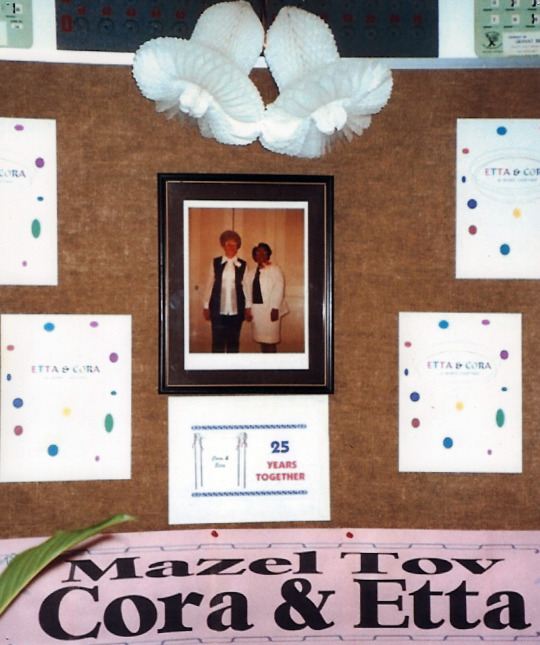
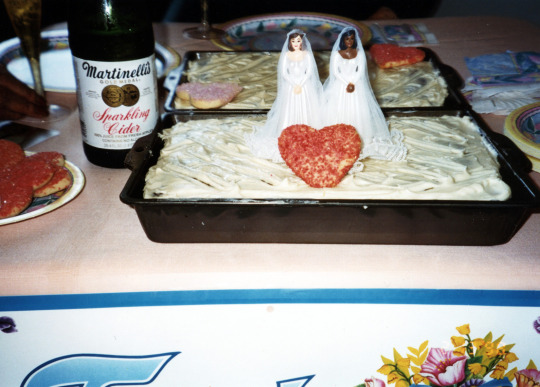
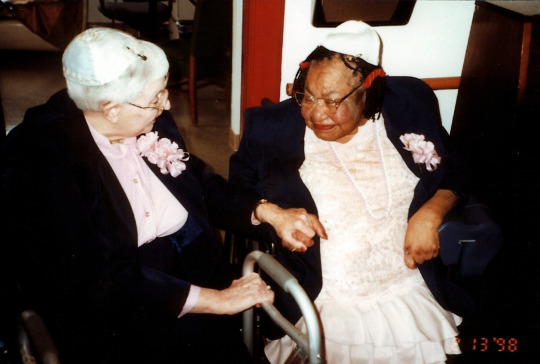
Cora Latz and Etta Perkins were a lesbian couple who met in 1972 and were together until Perkins’ death in 1998. In 1973, they held a commitment ceremony; in 1998, they privately renewed their vows with the staff who cared for them at the Jewish Home for the Aged.
GLBT Historical Society
21K notes
·
View notes
Photo

Yemenite talit (prayer shawl), early 20th century
438 notes
·
View notes
Text
Jews 2500 years ago: and your hat is ugly, too!
Haman: blocked
Jews: wait, unblock me, I need to tell you something
Haman: unblocked
Jews: *gragger sounds*
708 notes
·
View notes
Photo

Poster by Arthur Szyk for the Jewish Book Council of America/National Jewish Welfare Board, 1947.
433 notes
·
View notes


